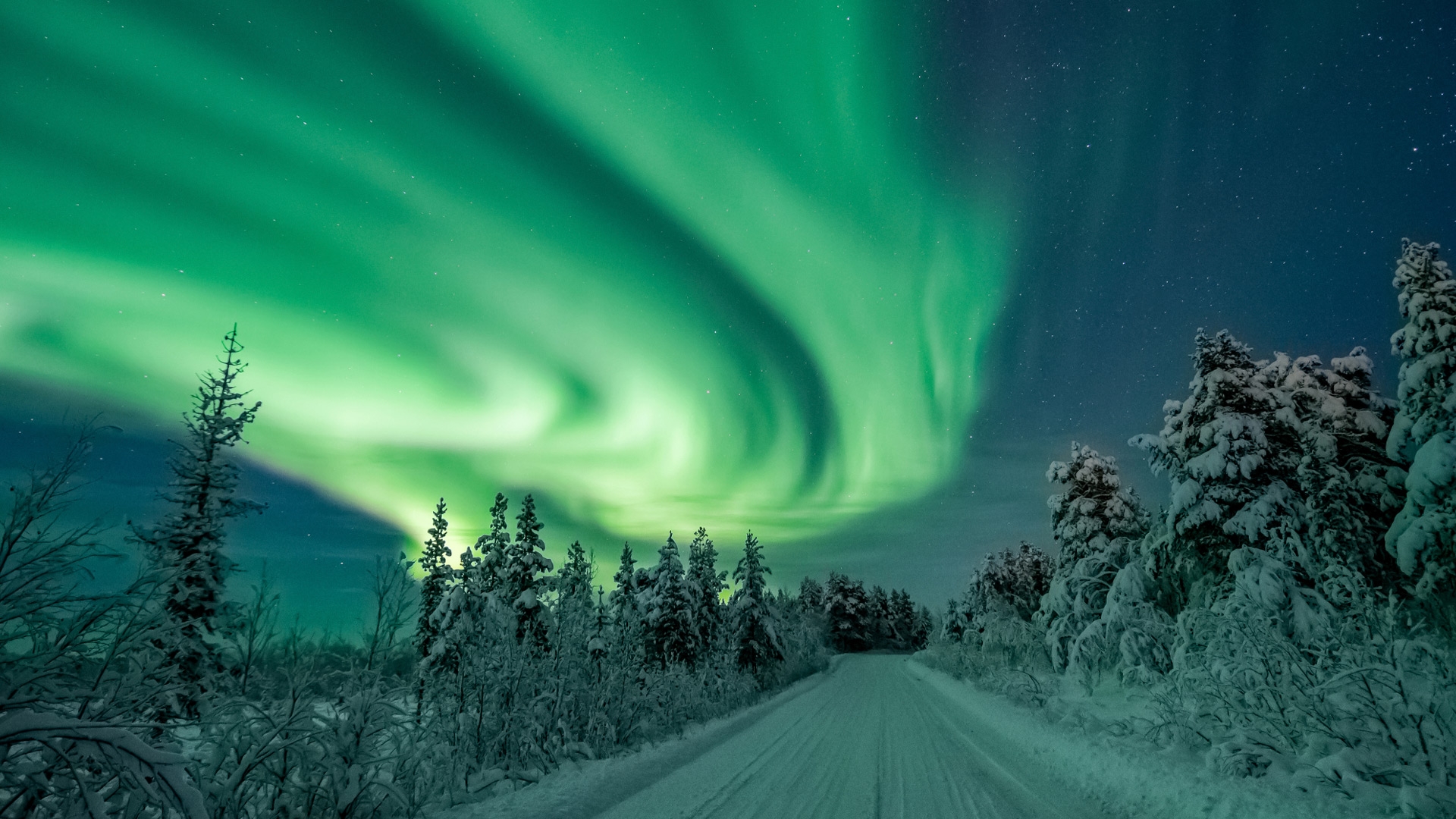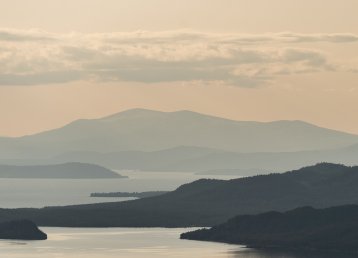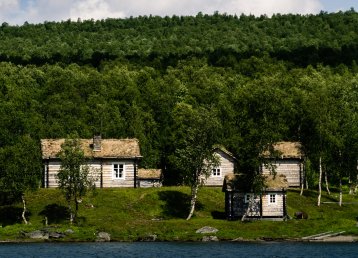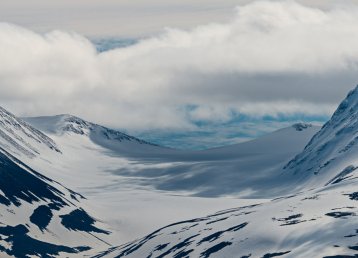We live in close proximity to nature in Swedish Lapland, and it’s not unusual for the region to be referred to as Northern Europe’s last remaining wilderness. Yet this place is anything but wilderness. This is our cultural heritage and the place we spend our everyday lives and free time, as so many of us rely on nature to make a living.
While moving their reindeer from winter to summer pastures, the Sámi people are keenly attentive to the variations of the seasons and climate. Although the majority of Sámi people are more or less permanently settled nowadays, they are no less dependent on the seasons and climate for that. This unique expertise is vital in a region where there is a major contrast between summer and winter, for example, with temperatures varying by as much as 70 degrees.
So what are these eight seasons? Well, let me explain. I’ll begin with one of my favourites: spring winter. Truth be told, this is the season most of us in Swedish Lapland hold in the highest esteem.
Spring-winter – finally the sun takes hold
Sping-winter – gidádálvve – falls during March/April and brings both heat and light after several months of harsh winter weather. It’s an amazing sensation to finally greet the powerful rays of warm sunlight against your winter-worn face as freckles begin to break out, and listen to the dripping of the eaves and the chirp of the birds, preferably in unison.
This is the season for intrepid snowmobile expeditions over the sea ice on mountain terrain, across the woodland or fantastic ski-tours with your jacket unfastened and a generous layer of sun cream on your face.
To really get into the spirit, build a sofa out of the snow, roll out a reindeer hide, light a fire and barbecue some sausages. For the Sámi reindeer herdsman, the late winter is a busy period, as the reindeer herds are transported from the winter pastures in the woodland or coastal areas up to the high ground. Here, it’s easier to keep an eye on the herd and ensure the expectant females are left in peace and quiet ahead of the calving period.
Also read
Visut, a story of the reindeerWinter loosens its grip – spring is here
The late winter gives way to the spring season, spanning both April and May. This period is known as gidá. At this time, the ice starts to melt in the southern part of Swedish Lapland, and the clean, crystal-clear waters begin to ripple and flow.
May sees the deciduous trees break out into luscious greens and the early spring flowers begin to blossom.
Up in the mountain terrain, the nights remain cold, but daytime temperatures are pleasant, with conditions perfect for snowmobiling or skiing outings. Spring sees the birth of the year’s reindeer calves, as they take their first unsteady steps under the watchful eye of the proud females.
Spring sees the birth of the year's reindeer calves, as they take their first unsteady steps.
Spring-summer, and it’s light all day long
June sees the summer nights get lighter and lighter as spring turns into spring-summer, or gidágiesse. At this time, the landscape breaks out into a luscious, leaf-green explosion of chlorophyll and growth. It’s amazing when you consider the self-same terrain was locked in an icy white grip just a couple of months earlier.
This is the start of the hiking and cycling seasons, and it’s time to pack away your jig twig and get out your spin and fly rods.
Over on the mountains, the reindeer enjoy a welcome period of calm, free from insects and bloodthirsty swarms of mosquitoes, taking the chance to graze on the bounties of the birch groves and swamplands.
Warmth and a vibrant, verdant landscape as summer starts
June/July heralds the long-awaited warmth of the summer – giesse. It’s time to swim in the shallow waters of the sea, sunbathe on the rocks, savour the beauty of the archipelago, bathe in one of the region’s thousands of lakes or cool off your weary feet in a rippling mountain brook after a hiking trek.
As the summer comes, the nights stay light. Explore the vast array of nature and experiences from the coastline to the mountain terrain during the summer, or ask the locals about their favourite spots and revel in the warmth and tranquillity. This is the time to recharge your batteries ahead of the autumn and winter months.
The summer is a hectic period for the Sámi villages. The reindeer herds have now been transferred to the high ground to avoid the insects and stay out of the heat, and it’s now time for the new-born calves to be marked. All the families gather together to help out. Marking often takes places during the cool, light summer nights. The woodland herdsmen remain in the forest region all year round. They use an old trick, which is still used for calf marking during the summer, whereby large fires are lit using moss in order to promote the spread of smoke. This helps keep insects away from both animals and people.
Also read
Under the midnight sunA carnival of colour comes with autumn-summer
August marks the start of the autumn-summer period, tjaktjagiesse. This period sees the berries and mushrooms in the woodland begin to ripen, nourished by the summer light and burst with vitamins, minerals, and antioxidants.
It’s high time to fill our larders and freezers with natural produce of the land ahead of the long winter. During this period, the evenings and nights grow darker, the insects begin to disappear, and the shades of the mountain terrain begin to change. Take a hike around this time, and some truly stunning scenery reward you.
The late summer is also a crucial period for the reindeer, who seize the opportunity to feed on everything the land has to offer. This is when they develop the layer of fat and muscle mass which sees them through the winter season.
The evenings and nights grow darker, the insects begin to disappear and the shades of the mountain terrain begin to change.
Autumn is high time for hunting
September and October are the autumn months, or tjaktja. The sun is high in the sky and the days can be warm and pleasant, even though the clear, high air pressure betrays the changing of the season. The frosty nights spread a layer of white across the landscape, although mushrooms and berries can still be found – in early September, at least.
Autumn is also hunting season, featuring the long-awaited, traditional elk hunt which gets underway at the start of September. This is also a busy period for the reindeer herdsmen. The reindeer are now grazing mainly on the low ground, and in mid-September, just before the rutting period, it’s time for the uncastrated males to be slaughtered. Any calves which may have been missed during the summer are marked at this time.
Autumn-winter brings both darkness and light
November/December is the early winter period – tjaktjadálvve. The days grow shorter, and the landscape begins to turn white, as the snow sets in. The snow is welcomed with open arms – not only does it light up the dark winter evenings and nights but, above all, it forms the vast, white natural playground which plays host to swarms of ski-enthusiasts eager for the pistes and tracks to open for business. If the weather gods play their part, this can be as early as the start of November.
The reindeer feast on residual grass and sedge which they’re lucky enough to find in the woodlands and swamplands, with the snow layer having grown several decimetres thick by this time. Early winter is also slaughtering season, and it’s primarily the calves which are targeted in November/December. The early winter period also sees reindeer herds divided into winter groups, for transportation to winter pastures in the woodland and, in some cases, all the way to the coast.
Now the winter chill begins to take hold, freezing the landscape into a myriad of stunning formations.
The winter brings a cloak of whiteness
Winter – or dálvve – is the longest of the eight seasons and runs from December to March. Now the winter chill begins to take hold, freezing the landscape into a myriad of stunning formations. Relentless snowstorms rage across the mountain terrain, through the woodland and along the coastline, reinforcing the vast carpet of snow.
If you plan on being outdoors, it’s vital to dress appropriately. Apply the layering principle, with a wool fabric nearest to the body, and wear a thick down jacket which helps retain body heat. Conditions may be harsh, but we don’t just wait indoors for the spring sunshine.
In Swedish Lapland, we embrace the winter months – and you will too. There is a wide range of outdoor activities during the season, including snow-shoe hiking, snowmobiling, skiing and ice fishing. Nature offers dramatic winter landscapes and crystal-clear evenings, while you could even catch a glimpse of the stunning northern lights during the night. Watching the beaming lights dance across the night skyline is a truly magical experience. In this period, the winter reindeer herds are monitored daily, although the animals are allowed to graze freely, mostly on ground lichens. Fully adapted to the Arctic climate, reindeer are capable of storing water and energy during cold periods.
































